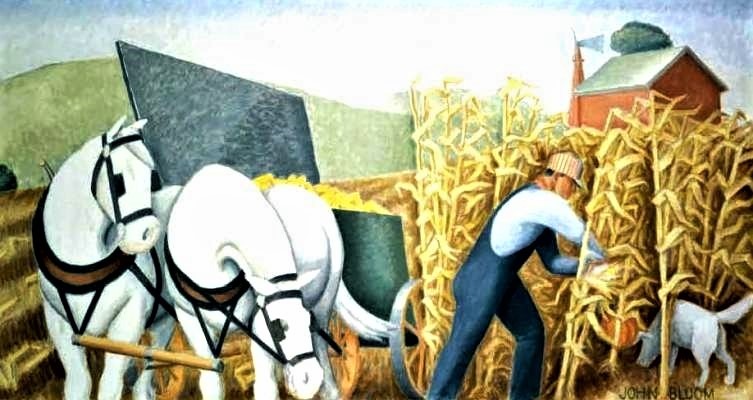My 93-year-old parents still live on the family farm, and it’s safe to say they have never seen corn-harvest time arrive with the challenges this fall brings. They and hundreds of other Midwesterners were in the path of an August 10th derecho, a hurricane-like storm that brought powerful straight-line winds, with a top burst of 140 mph. Aside from damage to buildings, power lines, and trees, many cornfields were flattened just as the ears were filling out. Corn should be six-feet high and turning brown for harvesting; many fields in the path of the derecho—like those on our family farm—now contain flattened, twisted waves of 10-inch high stalks.
Iowa State University experts have been in overdrive, examining fields and putting together a variety of resources to answer farmers’ most urgent questions. “Damage in Iowa cornfields ranges from bent or leaning corn to flattened fields with broken stalks,” said Meaghan Anderson, an Iowa State University field agronomist for central Iowa. Some fields are clearly dead, and the flattened corn is turning gray-green and drying out. Anderson noted, “They may start to smell moldy if we ever get any rain.” Some fields will have reduced yield potential, but harvesting damaged fields is going to be a messy, challenging affair. Some experts recommend no-till practices, while others look at various options to deal with the ruined residue. In any case, harvest time this year in some areas will have some new wrinkles.
Old Time Handpicking, Anyone?
Times have changed, but old timers might say it’s time to harness the horses, roll out the wagons, and grab the pickers’ gloves. In the 1930s and before, handpicking corn was an art and a hazard. Apparently the virtuosos would constantly have one ear of corn in hand and another one flying off to the wagon. Most pickers used a metal hook or peg attached to their hand to rip the shuck. “Ears were expected to be clean as a ribbon,” says Dad. “And successful pickers had talented teammates—in the form of smart horses. They’d respond to the picker’s commands, and some horses instinctively knew when to move ahead by listening to the corn hit the bang board.”

Corn didn’t always hit the wagon board after it left the picker’s hand. “It was common enough to get hit in the head with an ear thrown from someone picking in an outside row,” said Dad. “My friend Don was from a family of 12, so they had plenty of targets in the field. They made Don’s left-handed brother pick with a separate wagon because he was tossing from the other side, and his throws could be lethal.”
Handpicking could get competitive back then. Dad spoke with a 94-year-old who once took on a challenge and claims to have harvested 200 bushels in one day. “He only got four cents a bushel,” said Dad, “and he even spent time unloading the wagons. But he was justly proud of his work.”
Competitions still occur to this day; this contest from a few years ago in Illinois had a simple goal—handpick as much corn as you can in 20 minutes. The winner was philosophical about it all. “It’s a connection to the past and a way to remember my dad.”
Old timers faced blizzards, downed cornstalks, stubborn mules, and endless patches of cockleburs, but they took pride in pulling in the crop before winter. The crews included hired hands, teenagers (some schools took a two-week harvest vacation), and day workers (aka the good old boys hanging out in front of Henry’s Tavern).
Dad spoke with one old farmer who compared modern and old-time harvests and put it in perspective. “We’ve hauled nearly as much corn in the past few days as my Uncle Fred harvested during the entire fall of 1939. He hired out to pick corn by hand for a neighbor. By Thanksgiving, he’d picked 4,400 bushels, and by my reckoning, that’s 260,000 ears, and he did it one ear at a time. He got paid $175, enough to pay off his car loan.”
According to Dad, no one picked on Sunday back then. “Even the horses knew it was a day off.” But the crop came in, and sometime in late November or early December, the ritual ended. “And sure enough,” says Dad, “when that final ear of corn hit the bang board, some joker would call out, ‘That’s the one we’ve been looking for boys.’”
(collage photos from ethanolproducer.com, kimt.com and dmregister.com and the John Bloom painting from relylocal.com)
Your donation to CAST helps support the CAST mission of communicating science to meet the challenge of producing enough food, fiber and fuel for a growing population. Every gift, no matter the size, is appreciated.